The road to nirvana |
|
My journey into Photography, Horology, and Audiophilia |
Reed 1H tonearm
May 11, 2022
I have not reviewed tonearms before, but this time I have a lot of things to say.
The bearing
When I was researching for the third tonearm to mount on my Tornado NEO, the focus was on the bearing technology. I wanted something different and that's the reason why the Vivlab tionearms with magnetic ferrofluid bearing appeals so much. There's been many unipivot designs through the years, and when I came across Vertere's SG-PTA "tri-pivot articulated" tonearm, it became another subject of the research. While there are other pivoted arm bearing implementations, majority sticks to the proven "gimbal" type such as the Acoustic Signature tonearms, and you can't go wrong with that. I also own the Clearaudio Verify tonearm with magnetic bearing implementation. Such are the reasons why the entry level Reed tonearms are the least of my interest. Reed do have more exotic bearing technologies around including a hybrid tangential tracking Reed 5T, but I can't afford them.
In the end, my shortlisted tonearms are, in order of interest:
-
Vivlab RigidFloat/HA 7"
-
Vertere Super Groove Precision Tonearm
-
Reed 1H 9.5"
What ticks?
The RigidFloat use magnetic ferrofluid as the bearing. I remember from the past a tonearm made by Well Tempered using a string-suspended golf ball as bearing and silicon for dampening. The Vivlab to me, is an advancement of that technique. The RigidFloat is also designed without offset angle which without personal experience, means I have to believe their claims.
The Vertere use what they call tri-pivot articulated (TPA) bearing technology, and the concept is new to me. While it principally operates as unipivot, it does not hence, tri-pivot. The Vertere SGP also has an interesting resonance frequency adjustment that doubles as micro VTF adjustment that can be positioned along the carbon fiber tube.
Now here's the hard part, when I was researching for entry-level Reed tonearms, very few can be found and there no reference to the 1H (because it's relatively new) instead, one or two reviews are about the 1X are what I uncovered. So what ticks for the Reed 1H? Mystery!
Ruta
He's the guy at Reed. It was frustrating that when I tried to communicate with them initially, my emails are being rejected by their server. I was nearly pissed as the only other option according to their website is to call Lithuania, which is something I'm not prepared to do. I then tried looking for them in Facebook where I found them so I was able to send a message requesting for a manual. That message thankfully, was replied to and we finally got our email communications working.
I explained to him that one of my pre-requisite in buying products is to have access to the manual, which helps me in my decision. He was glad to send me one in PDF format. Like Audio Hungary, he's very responsive to my questions.
RTFM (reading the fuckin' manual)
I have to say that the manual was a bit underwhelming and Acoustic Signature still has the best manuals around, better than Clearaudio, Gryphon, and yes Reed. However, it is enough.
The Reed 1H manual is basically a quick assembly guide, very spartan, nothing more nothing less. Nevertheless, I was able to extract sufficient information to help in my decision making process. So what have I found out?
The bearing, described by Reed as "cardanic bearing system" is not a gimbal implementation but what I think is a hybrid approach which to be honest, presented concerns. They use sapphire V cups and needles of unknown material as the bearing. While the horizontal movement is somewhat traditional, the vertical movement is a variation of unipivot that I'd like to say duo-pivot. More on this later.
Adjustability is plenty, VTF, VTA (28mm to 48mm), azimuth, and anti-skate. The antiskate adjustment is on the fly because it is magnetic, and I find that cool. Other adjustments are definitely not possible on the fly, but relatively easy.
So why the Reed 1H?
I decided on the Reed 1H because it continues to be a mystery to me, and it looks so pretty I have no doubt it will complement the Tornado NEO aesthetically with its "seashell white" color scheme.
I also thought it was readily available. Duh.
I patiently waited for the arrival of the Reed 1H that took more than a month as it has to be hand made, and further delayed by shipping issues, which is beyond the distributor's control. During the waiting period, I requested the mounting diagram from Ruta and he happily obliged. Using the mechanical drawing with the much needed dimensions, I designed the armboard using Fusion 360 and 3D printed it using my ever reliable Cetus 3D Mk3. The initial material I used is the carbon fiber filled PLA that proved to be though to smoothen as my electric sander is busted. In the end, I settled for the normal PLA filament.
After 3D printing all the required components for the third arm for the Tornado NEO, I installed it already as seen in this photo.

Unboxing
The package arrived at the distributor May 8, just before the elections so I got it by the 10th. I'm excited!
The Reed 1H tonearm is the first tonearm I purchased that came in a wooden box, which gave a premium even for an entry level product.
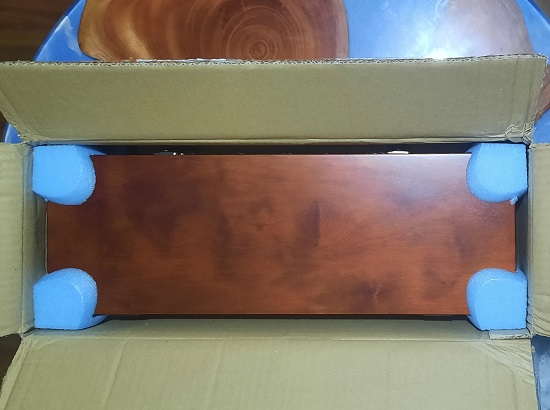


The documents include the printed manual, in color. There's a certificate of authenticity with serial number, mechanical drawing/dimensions for the mounting. Finally, there is a thick protractor for aligning the cartridge.
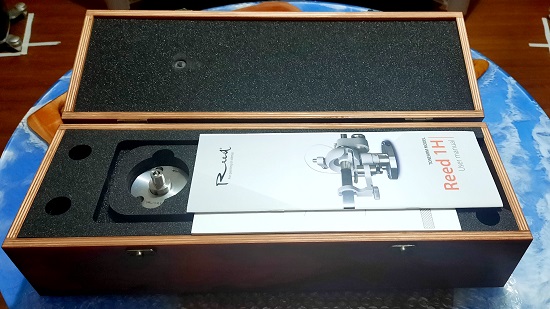
I got excited when I saw the tonearm base because I can now validate the fitment of the 3D printed armboard.

The rest of the tonearm assembly are on the second layer that also includes tools and alignment template in acrylic.
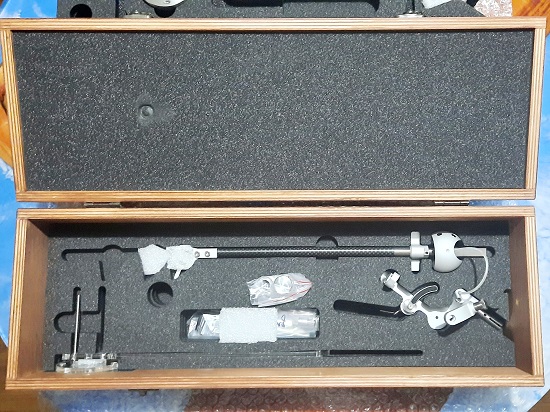
This is the rear-end of the tonearm that will require assembly where we deal with the bearings. Upper part is the tonearm frame and armwand in wood damped carbon fiber tube. The lower part (looks like a C) is the tonearm body, where the hydraulic lifter and tonearm rest are fixed.

This is the front-end of the tonearm with user-switchable headshell to allow owners with multiple cartridges to switch without having to align the cartridge over and over again. Also available is a wooden headshell box for safe storage.

The counterweight assembly, made up of the frame and the weight. In my excitement to assemble the tonearm, I wasn't able to get the exact weight of the weight (sic). There are three available options, which you can ask the dealer should you need a different one.
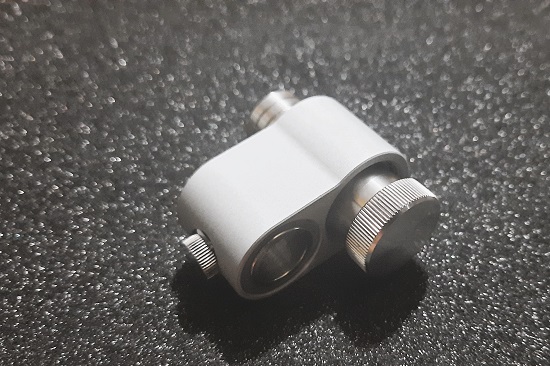
The top bearing inside its protective cap.

There are only three screws for securing the tonearm base to the armboard.

Some tools. Allen wrench and...
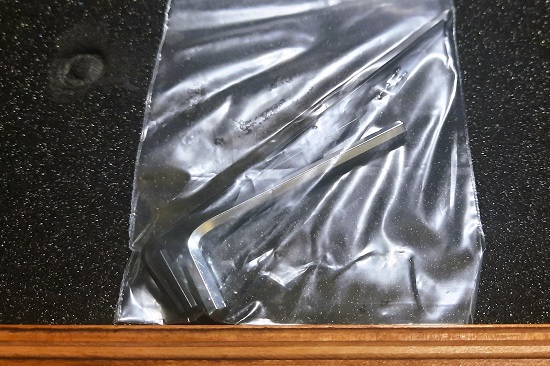
... I remember this from childhood which is used to pull hair from the armpit.
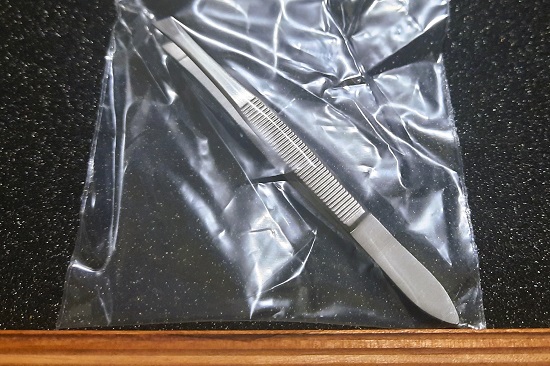
Finally the template, which is used to ensure proper positioning of the tonearm base relative to the turntable spindle.

Now that I have identified the contents of the box, it's time to assemble.